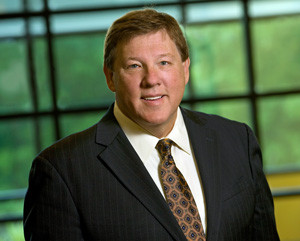
Many people apply the term “clean energy” narrowly—to describe renewable sources such as solar, wind, hydro, and geothermal. For EPRI, we think of “clean energy” as action and progress across the full portfolio of energy production, delivery, and use.
This broad application of the term is necessary because it directs our thinking and our research portfolio to account for and to address all environmental aspects of energy. Simply stated, at EPRI we view the word “clean” as a verb rather than an adjective, describing actions to make energy cleaner—regardless of its source or the stage of production, delivery, and use.
Consider this article in the September-October EPRI Journal, which reports on a process that encapsulates coal combustion products, including fly ash. While the typical application of “clean energy” to coal might be disputed by some, EPRI research on encapsulation demonstrates how innovation can “clean” energy.
Regulatory actions are driving coal-fired generation plant operators to close impoundments typically called ash ponds. In contrast to the traditional water/ash mixture pumped into ponds, or the landfilling of ash, the encapsulation process results in a by-product that solidifies in a landfill, where its constituents stabilize chemically and physically—thereby minimizing the leaching of constituents into the environment.
Also significant is that the process may prove helpful in managing wastewater streams from plants’ flue gas desulfurization systems. The brine that is produced in treating these wastewaters can be used in encapsulation. For scientists and engineers, such win-win technologies are particularly gratifying. For the process overall, EPRI is investigating the chemistry and mineralogy of the initial ingredients, the reactions, and the final products, along with transporting and landfilling the product and monitoring its long-term stability.
EPRI Journal also reports on a positive development in dealing with gypsum, which is another by-product of coal plants’ desulfurization technology. On eight Ohio farms, we have been measuring the effectiveness of applying gypsum to reduce phosphorus runoff from fertilizer use. This can make an important contribution to the health of surface waters and aquatic organisms. Our monitoring over a three-year period measured runoff reductions of 20–95% relative to control fields.
These examples reveal the value of bringing the problem-solving approach to every aspect of energy. A technology to help clean up emissions can be used to improve solid waste management and water quality.
This reminds me of the basic recipe for soap-making that goes back thousands of years. Some alert, innovative ancestor figured out that boiling wood ash in water produced a liquid that could be mixed with animal fat to produce soap. We have no way of knowing how the first soap-maker figured that out, but along with EPRI’s work that I’ve highlighted above, these stories point to the importance of being alert and innovative to clean up after ourselves.
Making energy cleaner also requires quantifiable, methodical evaluation and analysis. Utilities closing their coal ash ponds need a consistent, measurable approach to understanding the environmental aspects of their decisions.
EPRI has developed a framework for analyzing and assessing options, reported in this article. Because such frameworks are technical and specialized, it can be a challenge to describe them to the public or to key stakeholders. But they can provide a technically valid basis for regulatory compliance and can help assure the broader public that environmental issues are addressed effectively. With EPRI’s framework, utilities can quantitatively assess:
- Impacts to groundwater and surface water
- Impacts to air quality
- Probability of accidents
- Energy consumption, water use, and other impacts on natural resources
These are just a few aspects of our progress in clean energy. Like the long-ago discovery that we can make soap out of wood ash and animal fat, or today’s application of gypsum to farm fields, we can harness human ingenuity to help clean up. We can put the scientific method and engineering discipline to work in ever more rigorous ways so that clean energy is more than a category—it is a work in (human) progress.
Mike Howard

President and Chief Executive Officer, EPRI

